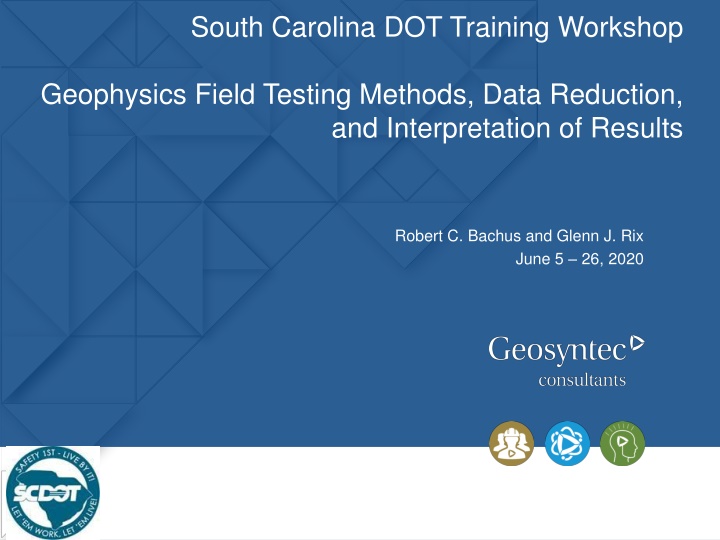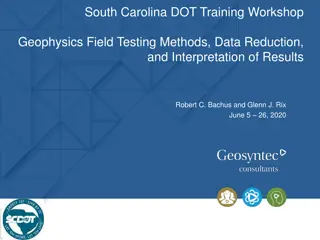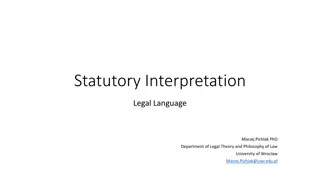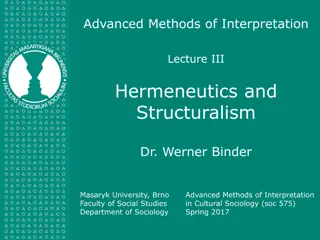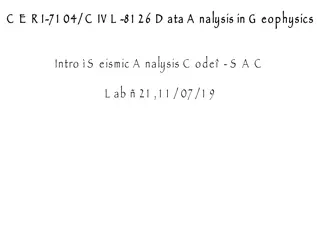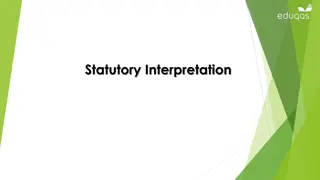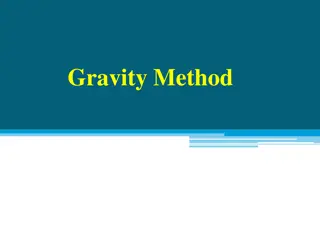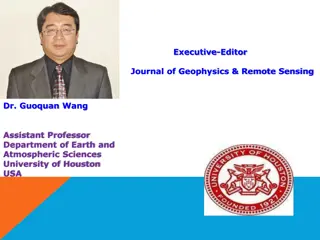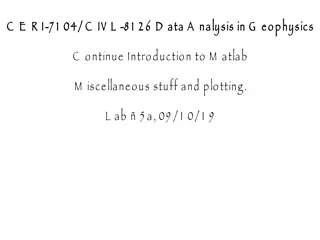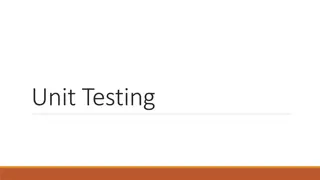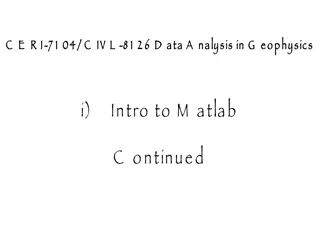Geophysics Field Testing Workshop: Methods and Interpretation
South Carolina DOT Training Workshop on geophysics field testing methods, data reduction, and interpretation of results by Robert C. Bachus and Glenn J. Rix. The workshop covers suspension logging, borehole geophysical logging, geotechnical testing, and geophysical service companies such as Schlumberger and Baker Hughes. It discusses various logging techniques, including sonic logging and suspension logging with monopole and dipole sources. The presentation also includes details on wave velocities and their interpretation in field testing.
Download Presentation

Please find below an Image/Link to download the presentation.
The content on the website is provided AS IS for your information and personal use only. It may not be sold, licensed, or shared on other websites without obtaining consent from the author.If you encounter any issues during the download, it is possible that the publisher has removed the file from their server.
You are allowed to download the files provided on this website for personal or commercial use, subject to the condition that they are used lawfully. All files are the property of their respective owners.
The content on the website is provided AS IS for your information and personal use only. It may not be sold, licensed, or shared on other websites without obtaining consent from the author.
E N D
Presentation Transcript
South Carolina DOT Training Workshop Geophysics Field Testing Methods, Data Reduction, and Interpretation of Results Robert C. Bachus and Glenn J. Rix June 5 26, 2020
Suspension Logging Fluid-Filled Borehole Uncased is strongly preferred Triaxial Receivers z Shear and Compression Waves Source OYO P-S Suspension Logger
Borehole Geophysical Logging Sonic (acoustic) logging e.g., Pickett, G.R. (1963). Acoustic character logs and their applications in formation evaluation, Journal of Petroleum Technology, 15(6), 659-667, DOI: 10.2118/452-PA Full waveform sonic logging Cheng, C.H., and Toksoz, M.N., (1981). Elastic wave propagation in a fluid-filled borehole and synthetic acoustic logs, Geophysics 46, 1042, DOI:10.1190/1.1441242 Paillet, F.L., and Cheng, C.H. (1991). Acoustic Waves in Boreholes, CRC Press, Boca Raton, 176 pp. Tang, X.-M., and Cheng, A. (2004). Quantitative Borehole Acoustic Methods, Handbook of Geophysical Exploration: Seismic Exploration, Vol. 24, Helbig, K., and Treitel, S., Eds. Elsevier, Amsterdam. Suspension logging Ohya, S., Ogura, K., and Imai, T. (1984). The suspension PS velocity logging system, Proceedings, Offshore Technology Conference, Houston, TX, May, DOI: 10.4043/4680-MS
Suspension Logging Geophysical Service Companies Schlumberger Baker Hughes Robertson GeoLogging Reeves Wireline, Inc. etc. Geotechnical Testing OYO Suspension Logger GEOVision Geophysical Services, Inc. Mount Sopris Instruments
Suspension Logging Monopole source Useful only in fast formations with Vs,soil > Vp,fluid because shear waves are critically refracted at the interface between the borehole fluid and surrounding formation (i.e., soil or rock) https://www.acs.psu.edu/drussell/Demos/rad2/mdq.html
Suspension Logging Dipole source Useful in slow formations with Vs,soil < Vp,fluid because shear waves are directly generated in the formation via a bending or flexural mode of vibration of the borehole Note: Multiple receivers https://www.acs.psu.edu/drussell/Demos/rad2/mdq.html Holdorsen et al., (2006)
Suspension Logging First peak 3.28 ft ???= 14.2 12.4 msec = 1823 ft/sec
Suspension Logging Vp (m/sec) Vs (m/sec) Vp/Vs Ratio 0 5000 0 2000 4000 0 5 10 0 0 0 Wilson 2-14 MLGW 236 100 100 100 200 200 200 300 300 300 Depth (m) 400 400 400 500 500 500 600 600 600 700 700 700 800 800 800 900 900 900
Suspension Logging Strengths Ideal for deep profiling Requires a single borehole Excellent resolution; typically 1.5 to 3 ft Compression and shear wave measurements obtained simultaneously Geotechnical applications can leverage extensive development and experience for resource exploration applications Limitations Proprietary nature of geotechnical applications Limited number of geotechnical vendors
